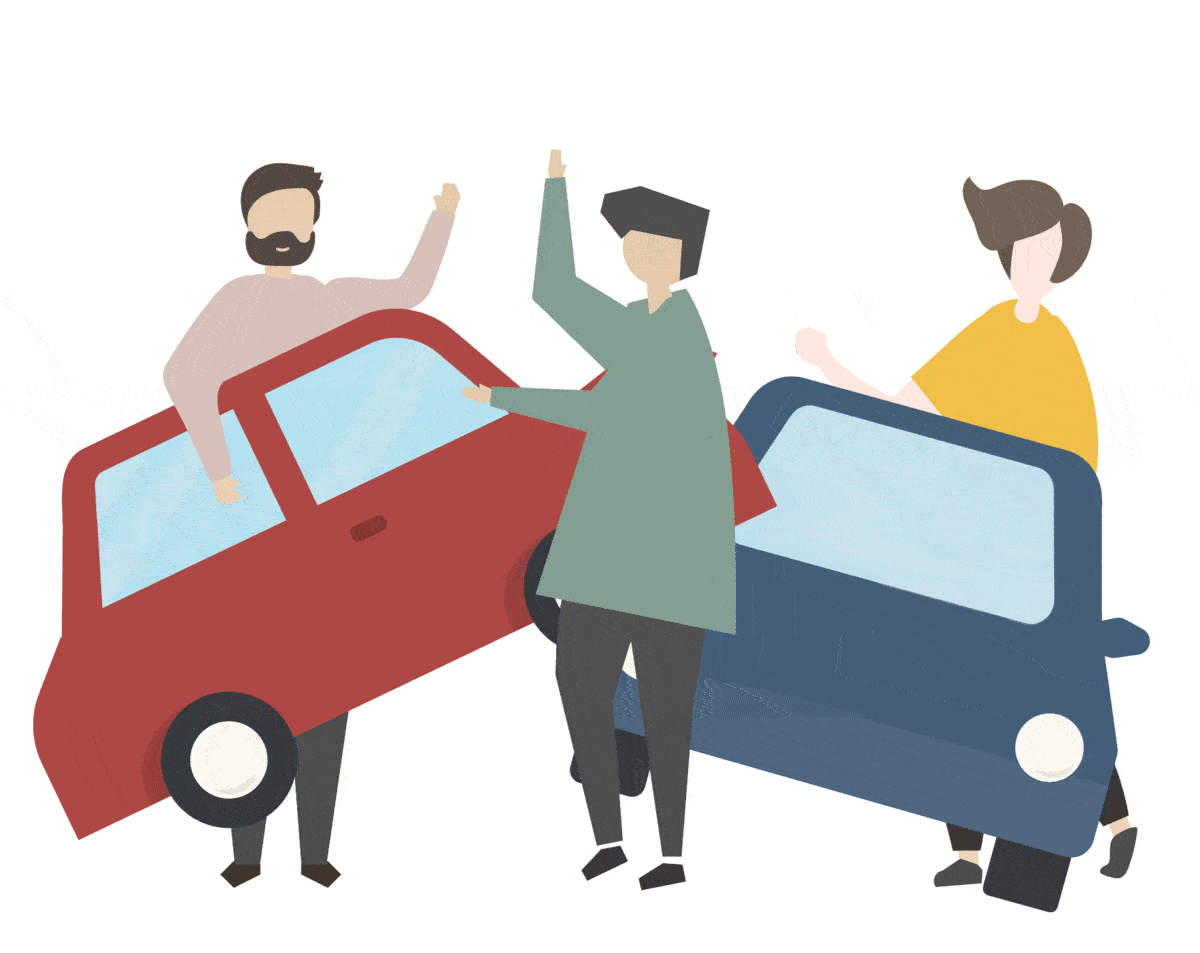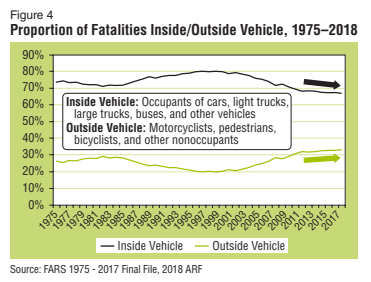How Ride-Hailing Is a Cancer
Growing unchecked, it devours resources and ultimately kills

The story of the car is a tragedy of the commons. One car is fine, but a lot of cars is a tragedy. Cars (and their parking) have choked cities in traffic and emissions, not to mention the fact that cars kill over 1.3 million people per year. The paradox is that the worse cars make a city, the more you’d rather be sitting in a car. Eventually, you reach a point where everyone is sitting in armoured weapons, emitting carbon, and barely moving at all.
In their pitch-decks, this is what ride-hailing companies promised to change. Unfortunately, like their illusions of profitability, it’s just not true.
We should actually look at ride-hailings lack of profitability as a sign. A profitable business is in some sort of balance with its environment, whereas ride-hailing is all out of whack. It’s a business that, at this scale, devours capital, workers, public roads, and the atmosphere. What do you call something that grows out of control, devouring everything in its path?
Ride-hailing isn’t a cure. Ride-hailing is cancer.
Death
If you showed Genghis Khan an SUV he’d see it as a weapon, because it is. What a handy siege weapon, a 2,000-kilo battering ram that can accelerate to 150 km per hour. Dude would have traded many horses for a Hilux. This is what we drive around our streets.

While cars are becoming more armoured and safer for the people inside, they are becoming more and more dangerous for the soft bodies outside. In the US, deaths inside the vehicle are decreasing, but pedestrians and cyclists are getting murdered at a higher rate.
Does ride-hailing somehow make this better? Both the passenger and pedestrian deaths? Well, no. How would it? Ride-hailing vehicles are still cars, driven by people with even less sleep, paying even less attention. They’ve actually increased deaths by 3%.
The arrival of ride-hailing is associated with an increase of approximately 3% in the number of fatalities and fatal accidents, for both vehicle occupants and pedestrians. The effects persist when controlling for proxies for smartphone adoption patterns. (John M. Barrios, Yael Hochberg, and Hanyi Yi)
Ride-hailing drivers are driving for their daily bread, they're incentivized to go fast and constantly stay on the road, and to work when tired or sick. Not to mention the fact that they have to constantly be looking at a phone to do their jobs. Hence it makes sense that ride-hailing has made the most negative externality, death, 3% worse.
It’s not like ride-hailing reinvented the car, they just said: “hey, what if you drive this siege weapon all the time, and sleep in it.” Ride-hailing companies have PhDs constantly gamifying their interfaces to get people to drive more and more. Of course, you get more fatalities.
Pollution
One phrase from ride-hailing pitch decks is that cars are not being used 90% of the time. That they are a fallow asset. Another way to look at that is, cars only emit carbon 10% of the time and ride-hailing increases that number dramatically. The other side of that ‘fallow asset’ equation is your lungs.
It’s a vicious cycle. A driver gets a car and uses it to cruise around for rides all day. The cab company sets targets, incentivizing them to work more and more, sometimes just to be online. With more drivers doing this, they create congestion, so everyone moves slower. And these cars are always on. They’re always emitting carbon.
They’re also pulling users away from low-carbon transport like trains, buses or walking because ride-hailing is subsidized and has billions of dollars going into making it cheap and easy. And because the pollution doesn’t show up on anyone’s balance sheet. It just shows up in our children’s lungs.
It’s not a small impact. According to a recent study, ride-hailing trips cause 69% more pollution than the trips they displace.
Traffic
While ride-hailing can’t escape the fact that they use cars, the promise was that users would at least not drive their personal vehicles. But this isn’t true, and it’s not clear that it’s even good.
A personal vehicle will come into the city and then park for 8 hours. A ride-hailing vehicle drives into city traffic and then never leaves. It just keeps cruising for rides, becoming a permanent fixture in traffic.
This, predictably, slows everyone down.
A study by Gregory D. Erhardt and colleagues at the University of Kentucky in conjunction with the city of San Francisco found that average speed within the city decreased to 22.2 miles per hour in 2016 from 25.6 mph in 2010, and that “vehicle hours of delay” increased by 63% in that period.
Although there were myriad contributors to the change, including population and employment growth, the researchers blamed it chiefly on the entry of the ride-sharing firms. The worst increase in congestion occurred in the central business district, where Uber, Lyft and other services were prevalent.
Most trips on those services “are adding new cars to the road,” they found. Most ride-hail drivers, moreover, lived outside San Francisco, so their commute into the city was another factor. (LATimes)
In a study commissioned by Uber and Lyft themselves, researchers found that vehicles were deadheading (cruising empty) nearly half the time. In that study, ride-hailing was accounting for up to 14% of the vehicle miles travelled in the city, much of it wasted.
Then you have to ask, does ride-hailing even replace private vehicles at all, or is it replacing something else. According to multiple surveys, easy, subsidized ride-hailing is replacing much more efficient forms of transportation — like public transit or walking.
Surveys report that fewer than half of RH rides in nine major metro areas actually substitute for a trip that someone would have made in a car (Schaller, 2018). Moreover, a survey conducted by the University of California at Davis of over 4,000 residents in seven major metros areas found that only 39% of respondents would drive themselves, carpool, or take a taxi if RH had not been available. The rest substitute from rail, biking, walking or not traveling at all (Clewlow and Mishra, 2017). (John M. Barrios, Yael Hochberg, and Hanyi Yi)
Ride-hailing is not the promised solution to congestion. Ride-hailing is the one who congests.
Why Ride-Hailing Needs To Be Regulated
And yet, these are all statistics. On a personal level, ride-hailing is great. I use ride-hailing, you can get exactly where you want to go immediately. As a consumer, it’s great. This is the modern tragedy of the commons. In this case, we are the sheep, and the commons are our cities.
This is one reason that the taxi industry was so regulated. Because those cars were using a public resource. Because there are invisible costs — safety, congestion, pollution — to putting more and more vehicles on the road. You could say that those regulations made cabs inefficient and annoying, but that wasn’t the point. The point was to balance taxis with the rest of society. With the public good. With ride-hailing going around those regulations, that balance has gotten all out of whack.
This is not to say that ride-hailing has no place in a city. It is efficient and it has its place in a transport mix. But the idea that it should be this ever-growing, all-consuming thing to satisfy VC appetites is just sheep gone wild. Ride-hailing left unchecked will destroy our commons, our cities. It is already taking lives and breath and time from us, and — most perniciously — blowing smoke up our collective ass.
Ride-hailing companies have been saying that they’re the cure for car cancer, but they’re not. They’re just more cancer, and their unchecked growth needs to be stopped.